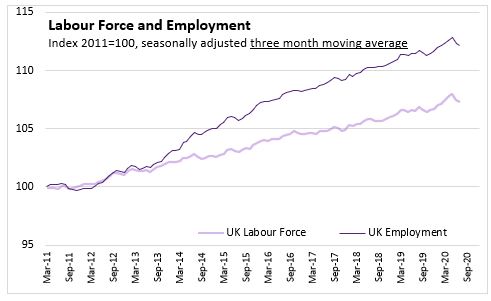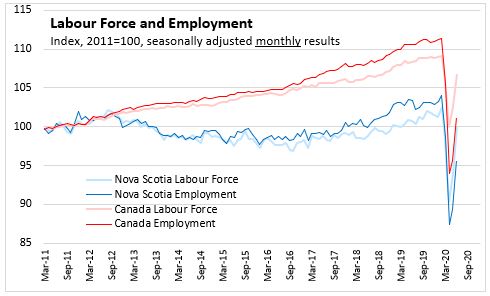The Economics and Statistics Division maintains archives of previous publications for accountability purposes, but makes no updates to keep these documents current with the latest data revisions from Statistics Canada. As a result, information in older documents may not be accurate. Please exercise caution when referring to older documents. For the latest information and historical data, please contact the individual listed to the right.
<--- Return to Archive
For additional information relating to this article, please contact:
July 16, 2020UK LABOUR FORCE SURVEY, MARCH 2020 TO MAY 2020 
The UK Office for National Statistics (ONS) reported today that the unemployment rate for the three-month period March 2020 to May 2020 averaged 3.9 per cent, remained same from previous estimates. Over the last seven years, there has been a steady decline in the UK unemployment rate, falling to lows not seen since 1974.
The UK employment rate among those aged 16-64 averaged 76.4 per cent from March to May, remained same from previous estimates.
Data from March-May 2020 showed further impacts of COVID-19 on the UK labour market. In March-May 2020 compared with December 2019-February 2020, the employment rate declined marginally, and the unemployment rate remained unchanged, while the inactivity rate increased slightly. The muted movement in the unemployment rate is likely to reflect the fact that the official definition of unemployment only includes those who have searched for work in the past month. Similarly, changes in the employment rate do not reflect the proportion of the workforce being furloughed as these people are still considered to be employed.
Early estimates for June 2020 from Pay As You Earn (PAYE) Real Time Information (RTI) data show that the number of paid employees fell by 1.9 per cent compared with June 2019. Average actual weekly hours continued to decrease in the three months to May 2020, reaching a record low after falling 16.7 per cent compared with March to May 2019.
The ONS Vacancy Survey for the period April to June 2020 shows that demand for labour continued to decrease, with vacancies falling by 59.9 per cent compared to April to June 2019 and reaching the lowest level since the Vacancy Survey began in 2001. Vacancies remained at a high level until the start of the COVID-19 social distancing measures introduced in March, where they have since fallen more sharply than during the 2008 to 2009 recession.
The ONS Business Impact of Coronavirus (COVID-19) Survey (BICS) Waves 7 for the period 1 June to 14 June 2020 showed that 23 per cent of the businesses workforce were furloughed. The firms which were trading, 6 per cent of the total workforce had returned from furloughed in the two weeks. The proportion of businesses’ workforce that had been furloughed dropped slightly from 27 per cent to 23 per cent over the period 23 March 2020 to 14 June 2020.
In March-May 2020, the growth of total weekly earnings continued to decline and regular average weekly earnings declined 0.2 per cent for the first time since the three months to January 2018. The RTI flash earnings estimate for June 2020 show that earnings have increased by 1.0 per cent compared with the same period of the previous year.
Since 2011-2012, employment in the UK has grown faster than the size of the labour force. The impact of COVID-19 is clearly apparent in falling employment and labour force in Canada and Nova Scotia for April 2020 and started to rebound in May and June 2020.


Sources: UK Office for National Statistics: Labour Market Overview
Statistics Canada Table 14-10-0287-02 Labour force characteristics by age group, monthly, seasonally adjusted
<--- Return to Archive